When to prune burning bush to keep these dramatic shrubs looking their best
Know when to trim burning bush plants, whether they need a gentle shaping or major prune
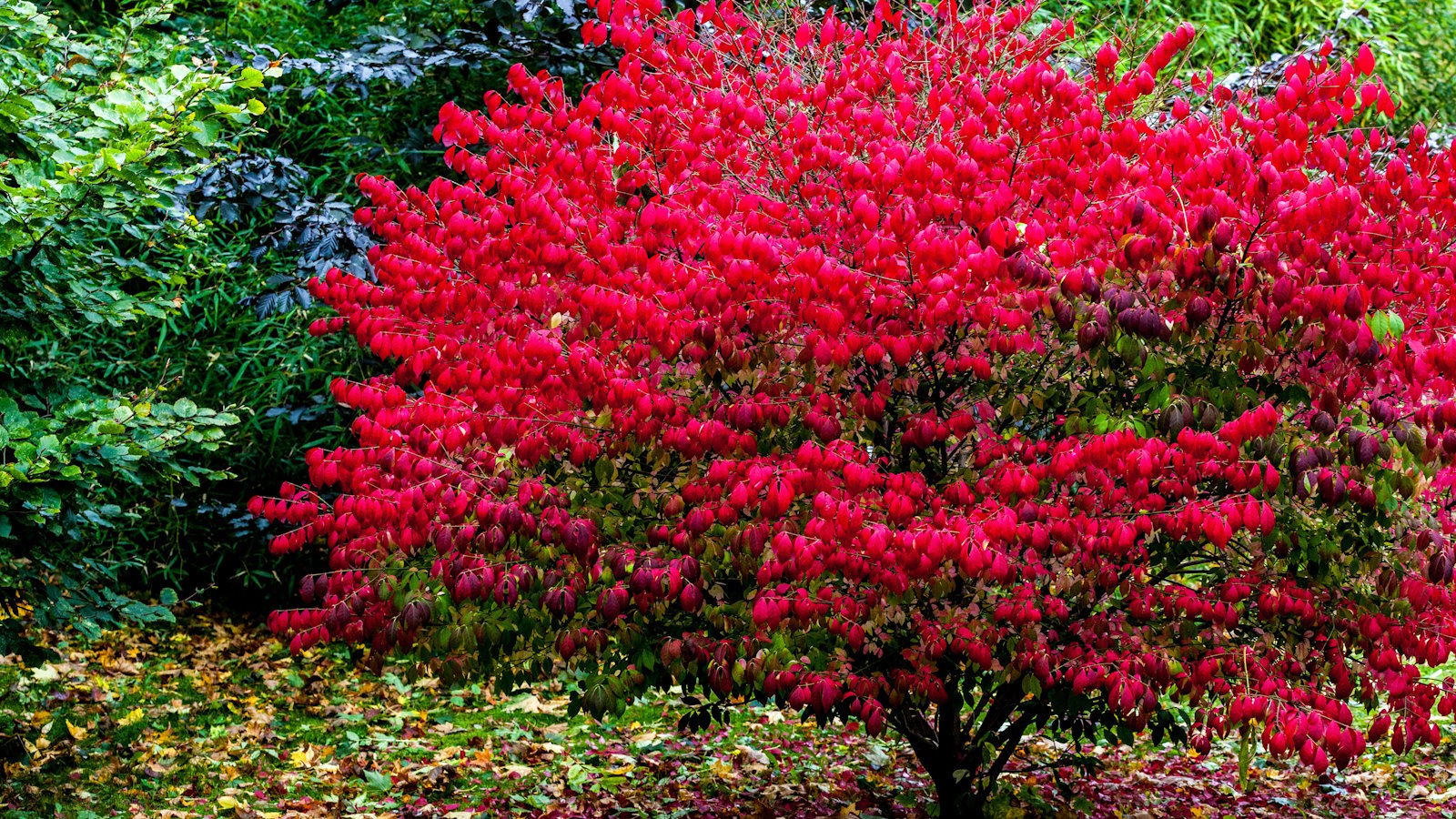

Burning bush, also known as Euonymus alatus, is a reliable shrub that has vivid red foliage in the fall. Burning bushes are slow-growing low maintenance shrubs that work in many different landscapes, however they can outgrow their space over time.
They can get too big, encroaching on other plants or onto walkways, and also have a tendency to look spindly. There will be times, though perhaps not regularly, that you need to prune the shrubs to keep them in check and looking their best.
Pruning can take place at slightly different times of year, depending on your reason for trimming. It is important to get the timing right to make absolutely sure the shrubs recovers properly and grows to give you the fiery foliage it is famed for.
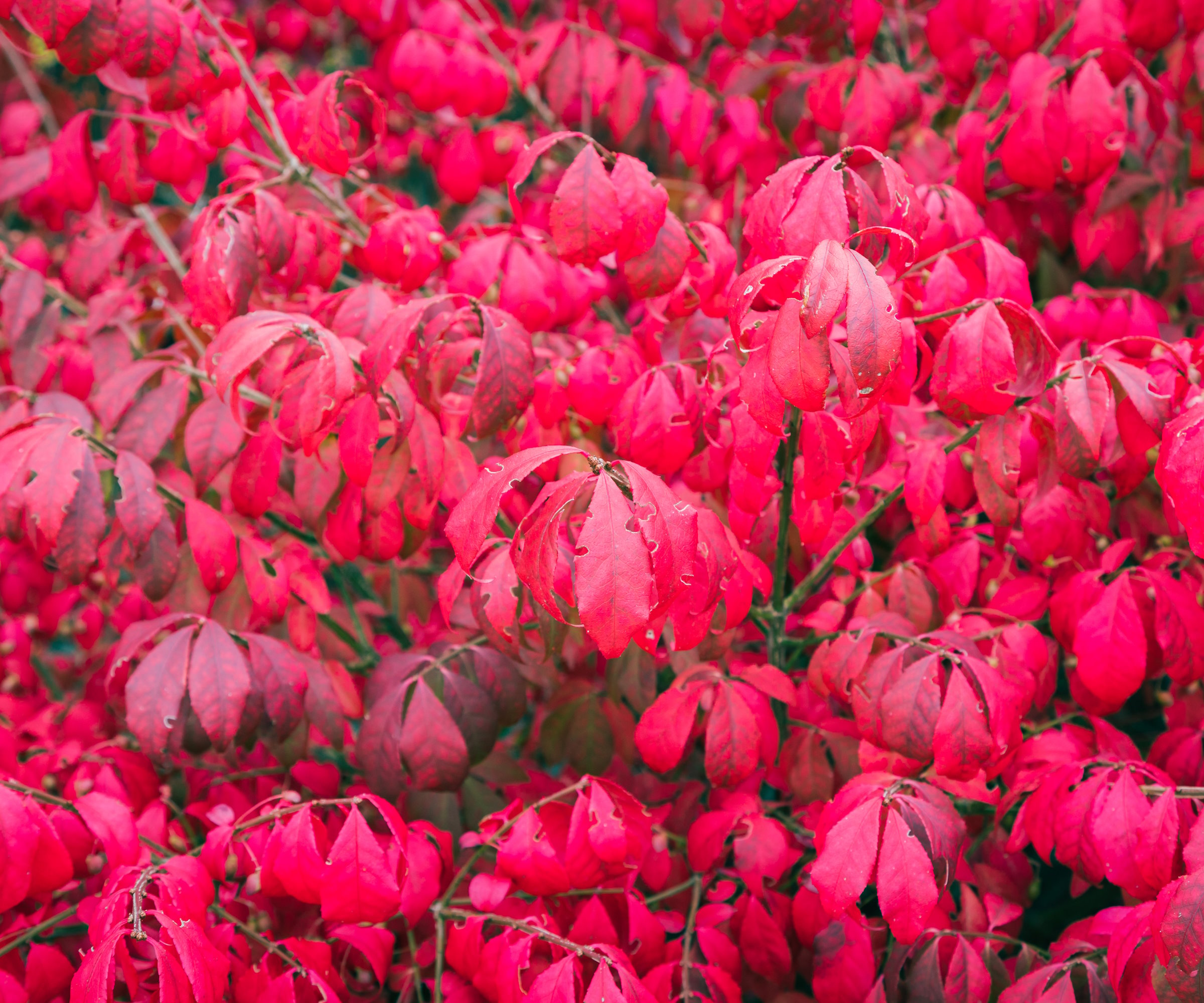
Burning bushes are adored for their vivid foliage color
The best times to prune a burning bush
Burning bushes can be trimmed in winter, spring, or even summer, depending on the type of pruning you are doing. Whenever you trim, always use sharp and clean garden tools, such as pruning shears or loppers, to prune shrubs. This will make pruning easier and protect the health of the plant. A simple pocket-sized sharpener, which can be found at Amazon or in stores, can help you keep tools sharp while out pruning in the garden.
Let’s take a look at the different types of pruning and the times of year they are best carried out.
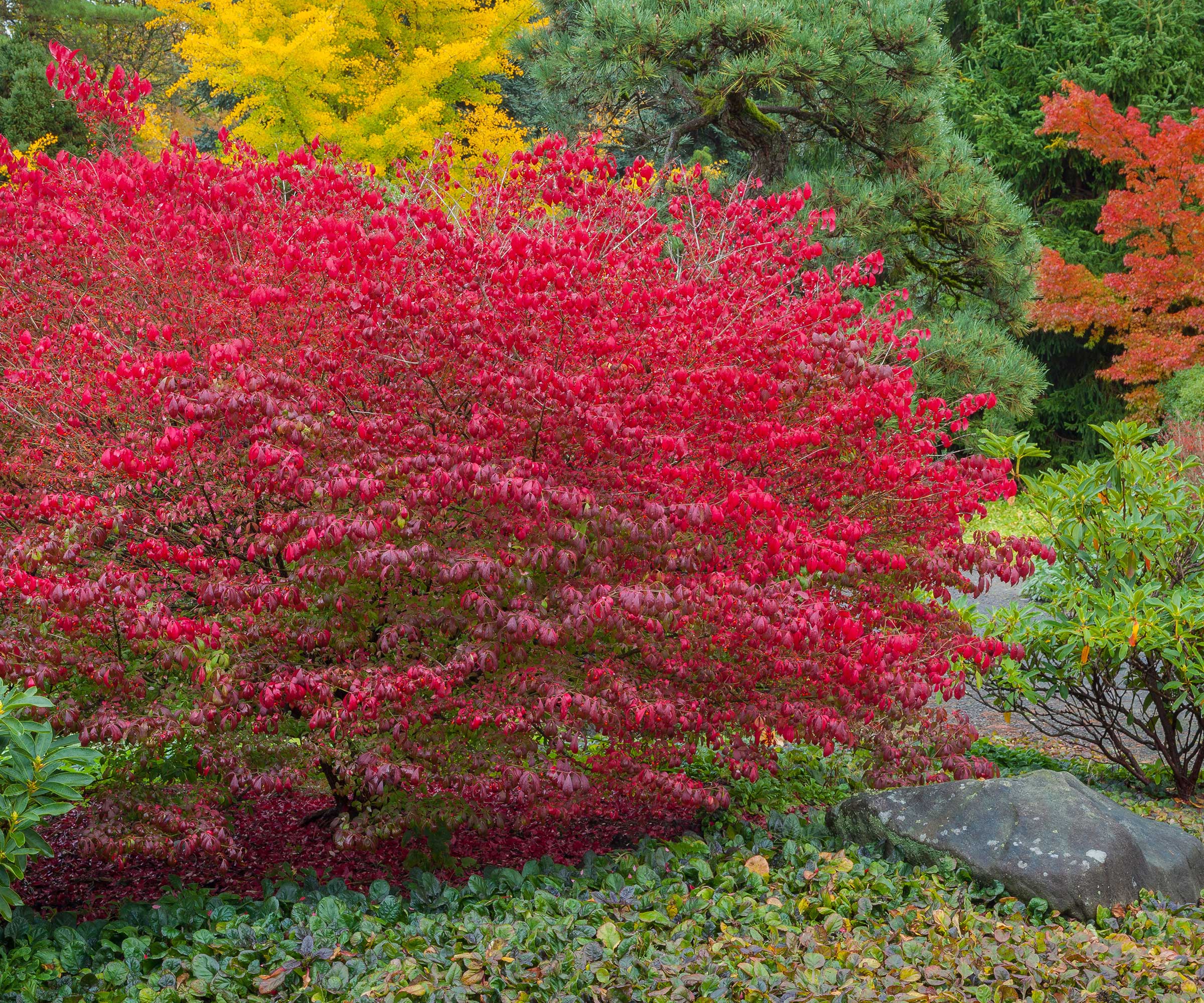
Burning bushes grow slowly but will need pruning
Late winter - major pruning
Late winter is the ideal time to do any major pruning. At this time, dormant deciduous shrubs are able to handle the stresses of pruning better and can start healing cuts fast when they start growing again.
Jessica Mercer from Plant Addicts claims late winter is a ‘good time’ to cut out up to a third of the oldest canes, or to thin the canopy. This opens up the shrub, improving light and air circulation, as well as reducing the overall size. She says that undergoing this heavy pruning in late winter means it will be able to ‘heal faster before summer heat sets it’.
On the timing, she adds: ‘Without the leaves, you can see the overall structure of the bush more easily and determine which branches to remove and where to make your cuts. The cuts are less likely to become infected by diseases because most of the pathogens are also dormant at this time, along with the insects that might be a problem later in the season.’
In the most extreme cases, burning bushes can be cut all the way down to around 6-12 inches from the ground in late winter. The shrubs can recover from such a major pruning.

Jessica Mercer, PhD, is the Senior Content Marketing Coordinator for Plant Addicts. As a plant collector, Jessica enjoys growing many different plants and learning about the best culture practices for each. She uses her science background to research interesting plant topics and present the information to other gardeners for Plant Addicts.
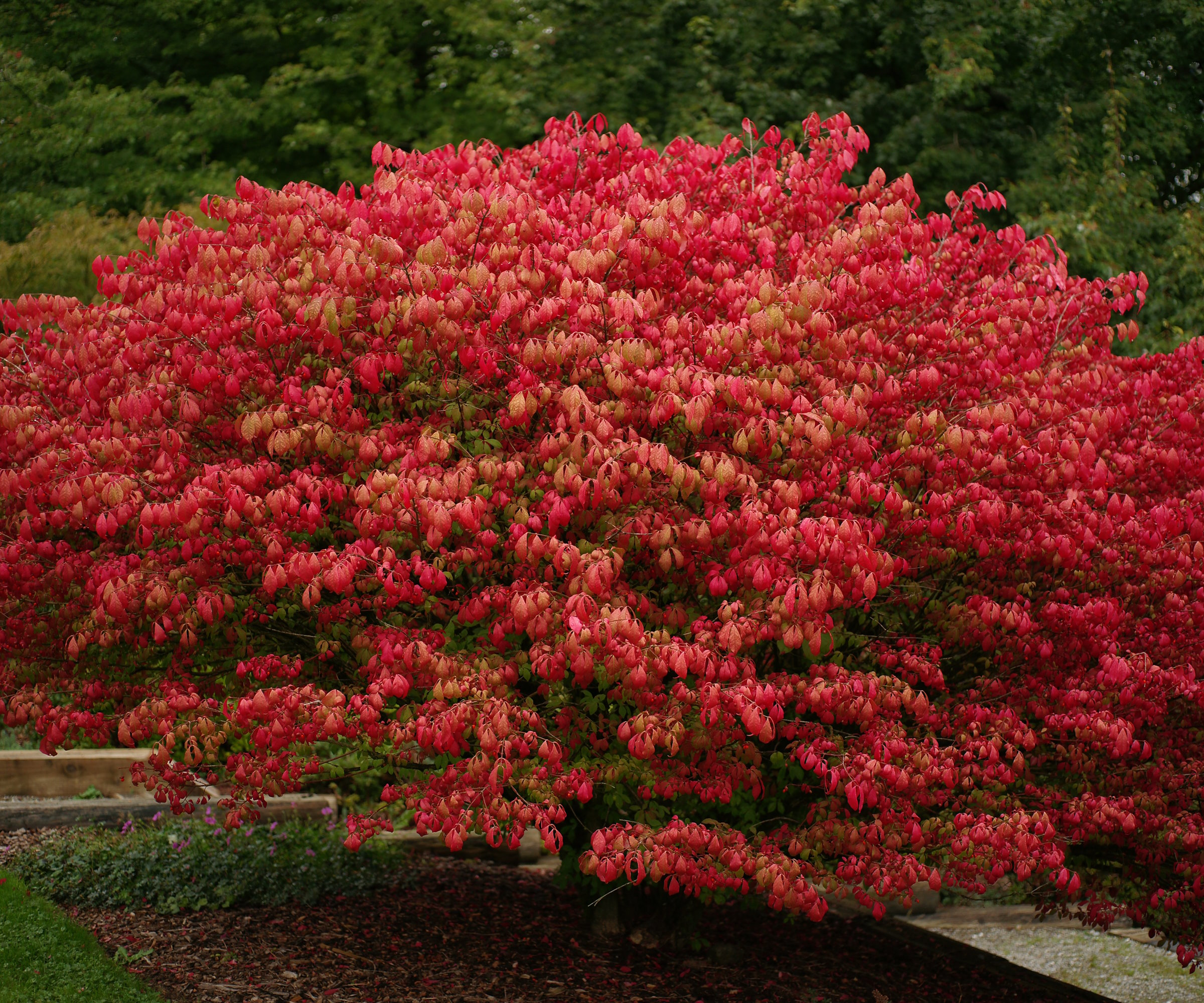
Burning bushes can grow very large and need pruning if they outgrow their area
Early spring - regular pruning
If you are planning more routine pruning, such as to gently tweak the shape, cut out rubbing branches, or remove dead, damaged, or diseased wood, then this is best done a little bit later in early spring. Routine pruning can help remove diseased or dying wood that could potentially lead to the spread of disease, and it will also promote new growth that will carry the brightest foliage.
Ward Dilmore, founder at Petrus Landscaping, says timing ‘ensures that the plant puts its energy into fresh growth’ when the warmer weather of spring arrives and the shrub comes out of dormancy.
He says: ‘As a gardener, I've seen the positive results of this approach first-hand, with pruned burning bushes bursting into vibrant growth come spring.’
If you are doing regular pruning it is recommended to follow the one-third pruning rule and remove no more than a third of the total volume of the shrub.

Ward Dilmore is a landscape designer and founder of Petrus Landscape in the Bay Area of San Francisco.
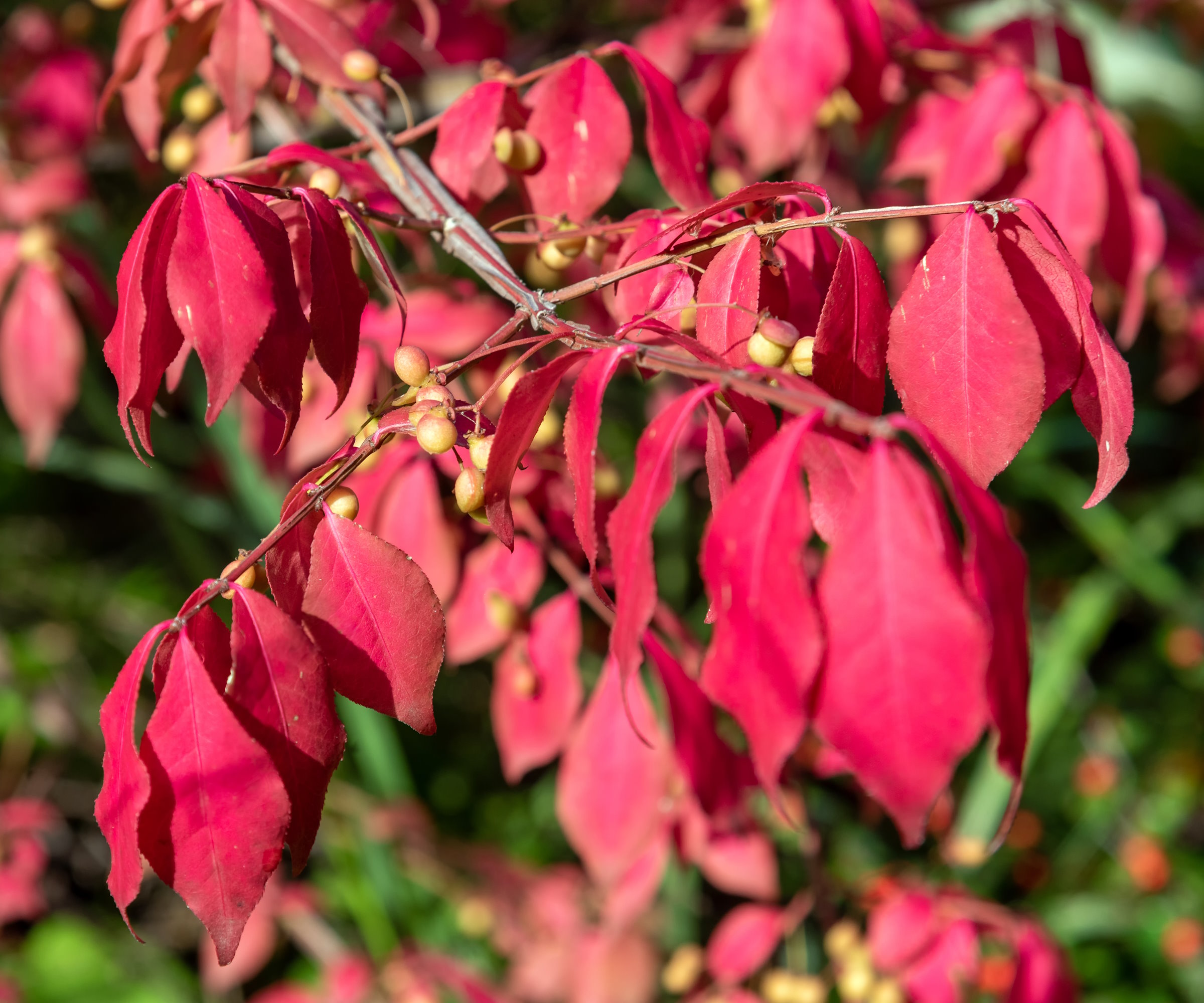
New wood will give the most vivid color of foliage
Summer - light pruning
Light pruning of burning bushes can be done later on in the year, during summer. Once the shrub has pushed out most of its new growth for the year, it can be a good opportunity to lightly refine the shape by trimming branches back.
This can be a good time to make minor alterations and it comes without the risk of removing flower buds, as burning bushes are grown for their foliage. Always make sure to trim lightly, cut back branches to a node and cut at a 45 degree angle.
FAQs
When is it too late to trim a burning bush?
Although pruning can be done in summer, it is not recommended to leave it late into the season. Jessica Mercer warns of this pruning mistake, saying: ‘Avoid pruning this shrub after August to give any new growth time to harden off before winter.’
New growth that occurs from pruning too late will be susceptible to damage from cold weather and this can potentially negatively affect the overall cold hardiness of the shrub.
Burning bushes have been popular for many years and may work as a fantastic fall shrub for privacy, however they are considered invasive in some North American states. See our guide on how to control burning bush for more information. There are alternative frost hardy plants that can provide bright color during the colder months, including forms of dogwood or winterberry. A great example is the Winter Red Winterberry, available at Fast Growing Trees, that has vivid red berries throughout winter.
Sign up to the Homes & Gardens newsletter
Design expertise in your inbox – from inspiring decorating ideas and beautiful celebrity homes to practical gardening advice and shopping round-ups.

Drew’s passion for gardening started with growing vegetables and salad in raised beds in a small urban terrace garden. He has worked as a professional gardener in historic gardens and specialises in growing vegetables, fruit, herbs, and cut flowers as a kitchen gardener. That passion for growing extends to being an allotmenteer, garden blogger, and producing how-to gardening guides for websites. Drew was shortlisted for the New Talent of the Year award at the 2023 Garden Media Guild Awards.
-
 I've spent over 200 hours testing vacuums and swear by my two Dysons – this is how I properly clean a Dyson vacuum filter for longer-lasting appliances
I've spent over 200 hours testing vacuums and swear by my two Dysons – this is how I properly clean a Dyson vacuum filter for longer-lasting appliancesYour Dyson vacuum will last much longer and clean at its best
By Dan Fauzi Published
-
 Bethenny Frankel calls this $695 machine the 'Rolls-Royce Cullinan of coffee' – it's a must-have luxury buy for iced-coffee lovers this springtime
Bethenny Frankel calls this $695 machine the 'Rolls-Royce Cullinan of coffee' – it's a must-have luxury buy for iced-coffee lovers this springtimeThe Real Housewife swears by a luxurious machine that makes nitro cold brew, cold brew, and cold espresso at the touch of a button – here's why it's worth it
By Sophie Edwards Published